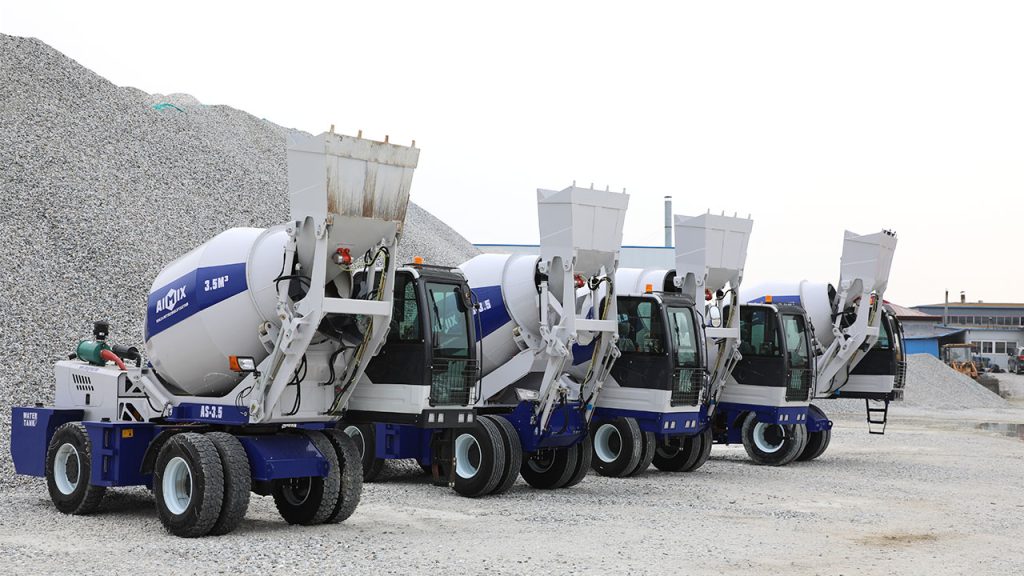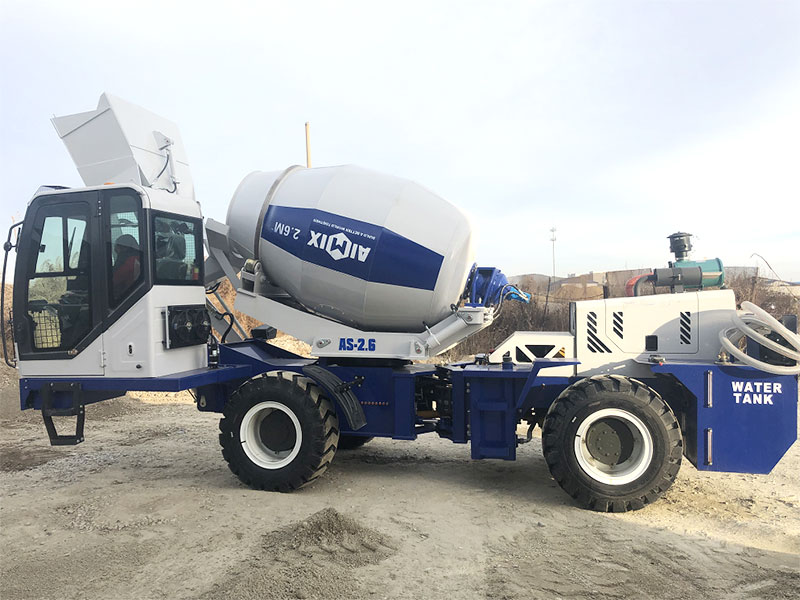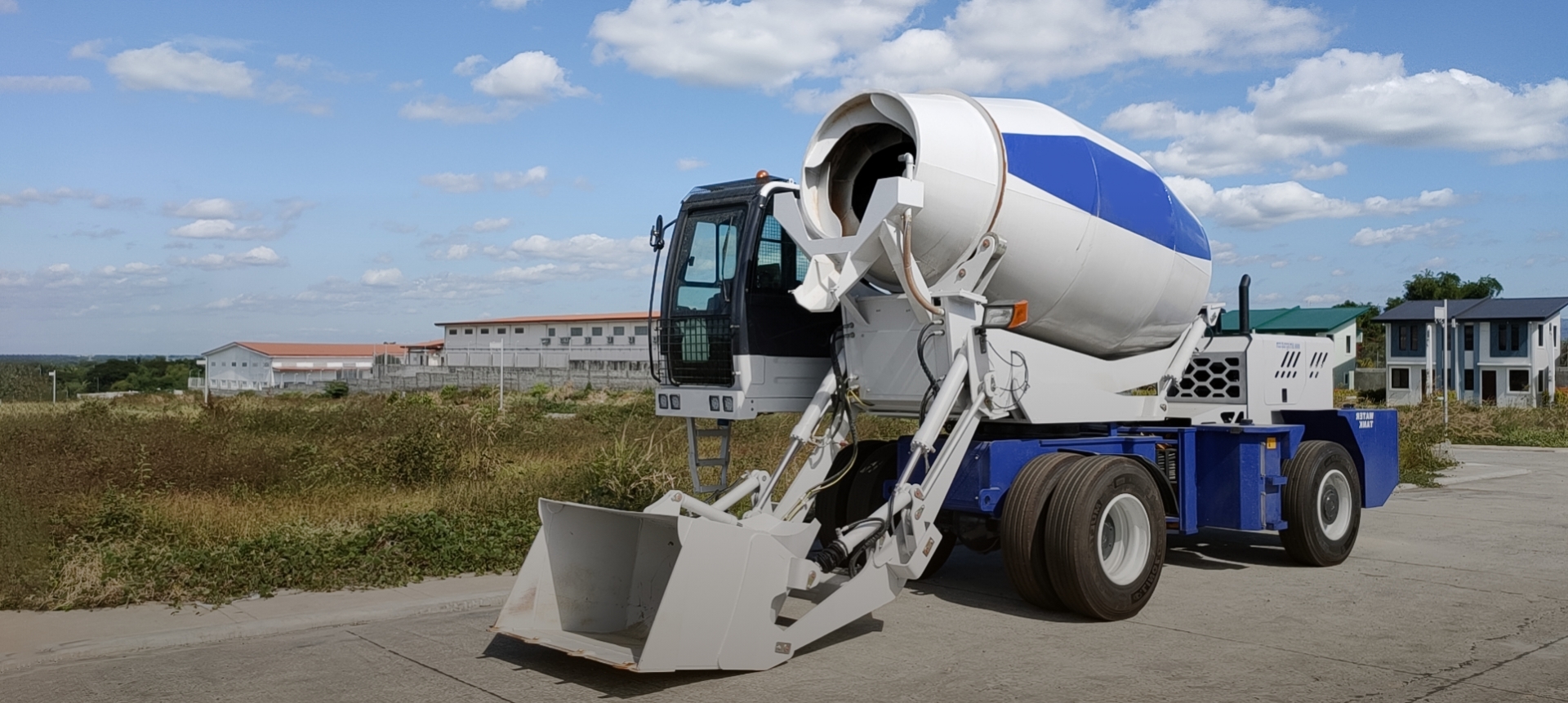In the ever-evolving landscape of construction equipment, self-loading concrete mixers have emerged as efficient and versatile solutions for on-site concrete production. These innovative machines not only streamline the mixing and transportation process but also incorporate fuel-saving features that contribute to cost-effectiveness and environmental sustainability.
Advanced Engine Technology:
Fuel efficiency begins with the heart of the self loading concrete mixer—the engine. Modern self-loading mixers are equipped with advanced engine technology, including electronic fuel injection systems and optimized combustion processes. These features ensure that the engine operates at peak efficiency, maximizing power output while minimizing fuel consumption.

Variable Displacement Hydraulic Pump:
A key fuel-saving feature in self-loading concrete mixers is the variable displacement hydraulic pump. Unlike fixed displacement pumps, variable displacement pumps adjust their output based on the load requirements. This means that the hydraulic system only works as hard as necessary, reducing the overall energy demand and, consequently, fuel consumption.
Energy Recovery Systems:
Some self-loading concrete mixers are designed with energy recovery systems that harness and reuse energy during certain operations. For example, regenerative braking systems capture energy during the deceleration of the mixer, converting it into electrical energy. This recovered energy can then be used to power auxiliary systems, reducing the need for additional fuel consumption.
Automatic Idling Systems:
To prevent unnecessary fuel consumption during periods of inactivity, self loading mixers often feature automatic idling systems. These systems detect when the mixer is not in use and automatically reduce the engine speed to idle levels. This prevents excessive fuel consumption during downtime, contributing to overall fuel savings.
Intelligent Load-Sensing Technology:
Load-sensing technology is a fuel-saving innovation that adjusts the hydraulic system’s pressure and flow based on the load requirements. In the context of self-loading concrete mixers, load sensing ensures that the hydraulic system provides the necessary power for mixing and loading without overworking the engine. This results in more efficient energy utilization and reduced fuel consumption.

Optimized Transmission Systems:
Fuel efficiency is further enhanced through optimized transmission systems in self-loading concrete mixers. These systems are designed to deliver power to the wheels with minimal energy loss. Smooth and efficient transmission contributes to overall fuel savings during both on-road transportation and on-site operations.
Lightweight Construction:
Many self-loading concrete mixers are constructed using lightweight materials without compromising durability. The reduced weight contributes to improved fuel efficiency, as the engine has less mass to move. This is particularly advantageous during transportation, where lower vehicle weight translates to lower fuel consumption.
Smart Load-Sensing Hydraulics for Drum Rotation:
The drum rotation in a self-loading concrete mixer is a crucial aspect of the mixing process. Smart load-sensing hydraulics optimize the power required for drum rotation based on the amount of material being mixed. This intelligent adjustment ensures that the self loading concrete mixer for sale operates efficiently without unnecessary fuel expenditure.
Innovative Mixing Drum Design:
Fuel-saving features are not limited to the powertrain alone. Innovative mixing drum designs contribute to efficient concrete mixing, reducing the need for prolonged mixing times. Features such as dual-direction mixing and optimized drum geometry ensure thorough blending of materials in a shorter duration, saving both time and fuel.
Telematics and Fleet Management:
Some self-loading concrete mixers are equipped with telematics systems and fleet management tools. These technologies enable operators to monitor fuel consumption in real-time and identify areas for improvement. By analyzing data on fuel usage, operators can implement strategies to optimize fuel efficiency and reduce overall operational costs.
Environmental Benefits:
The fuel-saving features of self-loading concrete mixers not only result in cost savings but also contribute to environmental sustainability. Reduced fuel consumption translates to lower greenhouse gas emissions, making these machines with affordable self loading concrete mixer price more eco-friendly compared to traditional counterparts.
Conclusion:
Self-loading concrete mixers with fuel-saving features represent a paradigm shift in the construction industry, aligning efficiency with environmental responsibility. The incorporation of advanced engine technology, variable displacement hydraulic pumps, energy recovery systems, and intelligent load-sensing technologies collectively contribute to substantial fuel savings. As construction professionals increasingly prioritize sustainability and cost-effectiveness, self-loading concrete mixers stand out as versatile, eco-efficient solutions that not only streamline concrete production but also contribute to a greener and more sustainable construction landscape.
